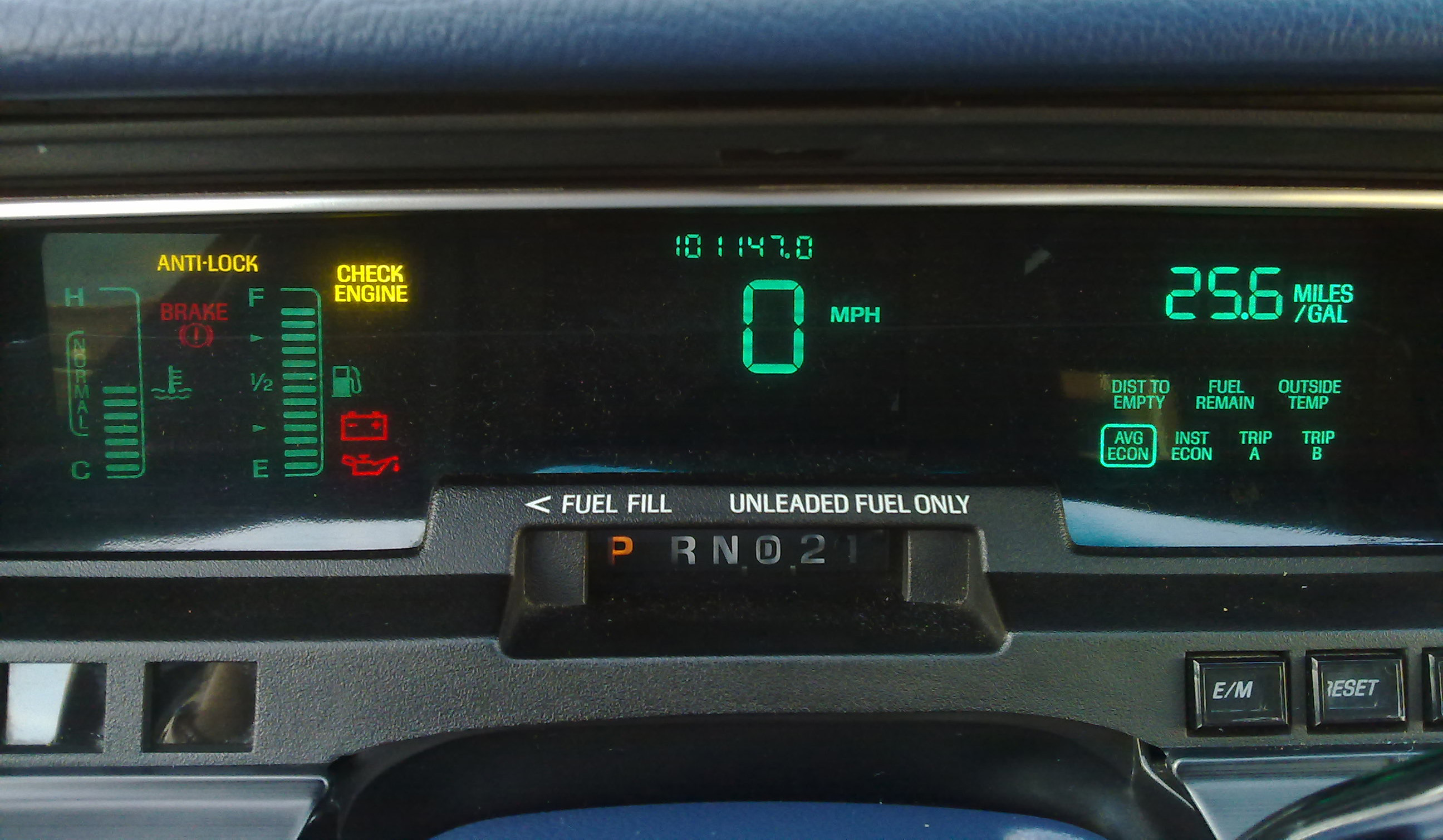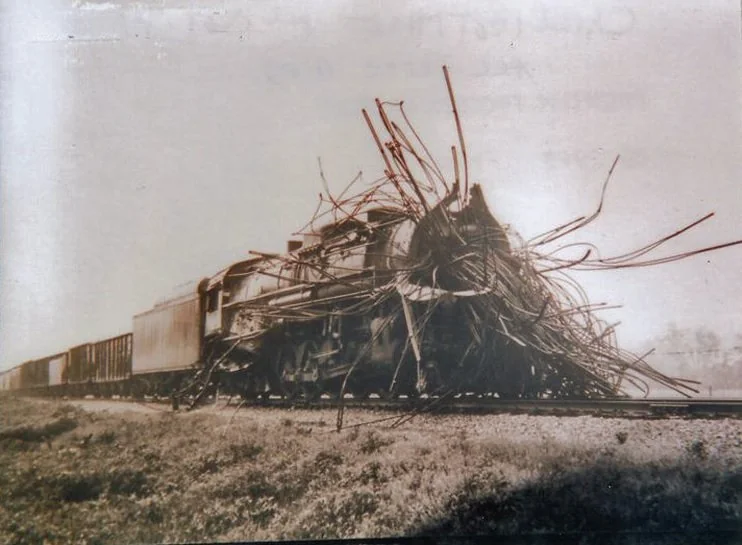I don’t mean BETTER. That’s a different conversation. I mean cooler.
An old CRT display was literally a small scale particle accelerator, firing angry electron beams at light speed towards the viewers, bent by an electromagnet that alternates at an ultra high frequency, stopped by a rounded rectangle of glowing phosphors.
If a CRT goes bad it can actually make people sick.
That’s just. Conceptually a lot COOLER than a modern LED panel, which really is just a bajillion very tiny lightbulbs.
CD players/walkmans. Wearing your headphones and jamming out music on your CD player makes you 10X cooler in my eyes.
I was thinking the other day how much cooler flap displays at stations and airports were compared to modern displays.
Such a nice interface between computer control and a purely mechanical display. Watching them update, flipping through all the variables to land on the right one, and then clearing was so cool.
I miss the noise they made too. Haven’t seen one for like 20 years now.
Clothing and towels made with asbestos fabric. During the middle ages you could clean them by throwing them in the fire and they would come out clean. Eventually your lungs would give up on you but for a while you had a very cool way to impress your guests.
… We (as in humanity) made a lot of cool shit before we realised it was slowly killing us.
And we’re still making stuff and slowly realizing it’s slowly killing us. Isn’t that neat?
Maybe one day we’ll have it all figured out. :p
Usually it’s killing us slower though. I don’t know if that’s progress
Older forms of computer RAM.
Before integrated circuits, we had core memory which was a grid of wires and at each intersection was a little magnetic donut that held a single 1 or 0.
https://en.wikipedia.org/wiki/Magnetic-core_memory
Before that they had delay line memory, where they used vibrations traveling down a long tube of mercury, and more bits meant a longer tube to store a longer wave train.
They use to have weaving grannies for the magnetic core memory production.
Pneumatic tubes were way, way cooler than email.
Of course, you could only use them to send a message to someone in the same office building, so the comparison isn’t perfect… but you know what I mean.
Big hospitals still have them to send medications and random lightweight stuff around the complex. My wife has worked in two large hospitals that had pretty extensive tube systems, used especially with pharmacy.
Tom Scott does a youtube video about one in Canada (IIRC) where they send radioactive medicine from the lab a down the road to a hospital due to the half life of the medication making traditional transport (ie vehicles) impractical.
Edit: bothered to look it up
deleted by creator
Oh man…I have an entire ten page paper on the go about this topic and it just keeps growing. One day I’ll publish it in a blog or something, but for now it’s just me vomiting up my thoughts about mass market manufacturing and the loss of zeitgeist.
The examples that I always use are a) Camera Lenses, b) Typewriters, and c) watches.
Mechanical things age individually, developing a sort of Kami, or personality of their own. Camera lenses wear out differently, develop lens bokehs that are unique. Their apertures breath differently as they age No two old mechanical camera lenses are quite the same. Similarly to typewriters; usage creates individual characteristics, so much so that law enforcement can pinpoint a particular typewriter used in a ransom note.
It’s something that we’ve lost in a mass produced world. And to me, that’s a loss of unimaginable proportions.
Consider a pocket watch from the civil war, passed down from generation to generation because it was special both in craftsmanship and in connotation. Who the hell is passing their Apple Watch down from generation to generation? No one…because it’s just plastic and metal junk in two years. Or buying a table from Ikea versus buying one made bespoke by your neighbour down the street who wood works in his garage. Which of those is worthy of being an heirloom?
If our things are in part what informs the future of our role in the zeitgeist, what do we have except for mounds of plastic scrap.
I like the look of vacuum-fluorescent displays (VFDs) – a high-contrast display with a black background, solid color areas. Enough brightness to cause some haloing spilling over into the blackness if you were looking at it. Led to a particular design style adapted to the technology, was very “high-tech” in maybe the 1980s.

OLEDs have high contrast, and I suppose you could probably replicate the look, but I doubt that the style will come back.
https://en.wikipedia.org/wiki/Vacuum_fluorescent_display
EDIT: A few more car dashboards using similar style:
https://s3.amazonaws.com/skillshare/uploads/session/tmp/50c99738
https://www.pinterest.com/hudsandguis/retro-car-dashboards/
And some concept cars with similar dash:
https://www.hudsandguis.com/home/2022/retro-digital-dashboards
Some other devices using VFDs:
A lot of older tech had a way more interesting silhouette. You can see this clearly in how many objects live on in icon form. We still often use handset phones, magnifying glasses, gears, or the infamous floppy disk save icon. I think the staying power of these really comes from how ephemeral and formless digital tech can be.
Electromechanical stuff. Like old jukeboxes, pinball machines or anything else that required programming before the widespread use of microcontrollers.
Some people have already mentioned stuff akin to this, like the mechanical govenor, or the post abt THIS MUSEUM IS NOT OBSOLETE, but it really deserves its own thread.
Technology Connections on YouTube has made some great videos about devices like that.
Cars used to be cool. Every car company had some kind of sporty car, a couple cheap cars, a big luxury sedan and, a while ago, a station wagon.
Now every car is an SUV or CUV. Sedans are getting phased out. Cool sports cars don’t make money so they don’t make them. People don’t buy station wagons so they don’t make them. And they’re pushing big, angry trucks on everyone.
This, so much this. As a car enjoyer, seeing cars slowly mutate into giant bloated expensive iPads on wheels is painful. I don’t want to buy any car made past 2010 and I know that won’t be a viable option soon.
Before transistors there were vacuum tubes which did the same thing but using very different principles (and were also way bigger, even than traditional transistors and billions of times more than the transistors in the most modern ICs)
Before electric milling or even steam milling, flour used to be milled using watermills and windmills which, IMHO, are way cooler.
a 127mm vacuum tube, quite large, is equivalent to 127,000,000 nm which is only 63.5 million times bigger than a cutting edge transistor so that estimate seems a little exaggerated.
That’s just the length, if you are comparing volumes it’s an under estimate.
Steam locomotives. The crazy streamlining, the size of some of those motherfuckers. 6 foot tall wheels, 100 tons moving at 125mph and all that shit accomplished 80+ years ago
Also, when they catastrophically failed they wound up looking like industrial lovecraftian horrors and produced some of the loudest non-nuclear man made explosions.
None of which is a good thing, but is still pretty cool.

Looks like one of those mechanical cancer SCPs.
Disney lost their old camera tech used to make a “yellow screen” with sodium vapor lights.
It’s actually better than a green screen because the yellow light is so specific that even if you remove that particular frequency of light, everything else still looks fine. You can do all sorts of things that would normally be very difficult to pull off with any of our green screen tech (like drinking water in a clear bottle or wearing a rainbow dress).
Considering LEDs are so good at producing a very tight wavelength, I wonder if this could be replicated with more energy efficient lamps.
Or if non visible spectrum lights can be used to make similar alpha channel masks that don’t affect lighting the scene.
A laser, maybe, but definitely not LEDs. Vapor/gas lamps produce the narrowest frequency bands possible, because it comes from very well defined atomic transitions (Hz range). LEDs produce frequency bands with widths in the GHz/THz range, while semiconductor lasers can maybe reach KHz if they are really good. So, unfortunately, for this type of applications, vapor lamps would probably still be needed.
Source: I work with lasers and spectroscopy.
Edit: very good idea about using non-visible light!
Bicycle shifters.
The first iteration that could be operated without stopping was the Campagnolo Cambio Corsa.
To shift, you had to reach behind you, where there were 2 levers.The first one loosened the rear axle so it could move freely back and forth in the dropouts.
The second one had an eyelet you could use to move the chain sideways.
You put the chain on a different cog, and the rear wheel jumped forward or back due to the changed chain length.
Then you tightened the rear axle again.It’s terrifyingly beautiful:

The fuck!
Hi there

Portable consoles. They’re dead now or replaced by indie shit. No, the switch doesn’t count, if it can’t fit in my pocket isn’t portable.
Gpd win mini.
Fits in your pocket, puts the deck to shame and supports an external GPU.
An absolute monster.











